
Henry Middleton was a planter, public official, and a Founding Father of the United States from South Carolina. A member of the colonial legislature, during the American Revolution he attended the Continental Congress and served as that body's presiding officer for a few days in 1774. He signed the Continental Association but left Congress before it declared independence. Back in South Carolina, he served as president of the provincial congress and senator in the newly created state government. After his capture by the British in 1780, he accepted defeat and returned to the status of a British subject until the end of the war.

Robert Young Hayne was an American lawyer, planter and politician. He served in the United States Senate from 1823 to 1832, as Governor of South Carolina 1832–1834, and as Mayor of Charleston 1836–1837. As Senator and Governor, he was a leading figure in the Nullification Crisis and, along with John C. Calhoun and James Hamilton Jr., a vocal proponent of the doctrines of states' rights, compact theory, and nullification; his 1830 debate in the Senate with Daniel Webster is considered a defining episode in the constitutional crisis which precipitated the American Civil War.

The Gibbes, later Osborne-Gibbes Baronetcy, of Springhead in Barbados, was a title in the Baronetage of Great Britain. It was created on 30 May 1774 for Philip Gibbes, a wealthy Barbadian plantation owner.

Rebecca Brewton Motte (1737–1815) was a plantation owner in South Carolina and townhouse owner in its chief city of Charleston. She was known as a patriot in the American Revolution, supplying continental forces with food and supplies for five years. By the end of the war, she had become one of the wealthiest individuals in the state, having inherited property from both her older brother Miles Brewton, who was lost at sea in 1775, and her husband Jacob Motte, who died in 1780.
Robert Gibbes was an English Landgrave, chairman and acting governor of the province of South Carolina between 1710-1712. Although he was elected acting governor by the Executive Council between the three proprietary deputies of former governor, Edward Tynte, after his death, received one vote more than his opponent Thomas Broughton, getting it through bribery. This sparked a conflict between both the oppositions and their supporters which finished with the Lords Proprietors declaring the election of Gibbes illegal and the appointment of Charles Craven as governor of South Carolina in 1711, who didn't arrive until 1712.

Peter Manigault was an attorney, plantation owner, slave owner, and colonial legislator native to Charleston, South Carolina. He was the wealthiest man in the British North American colonies at the time of his death and owned hundreds of slaves. He was the son-in-law of Joseph Wragg, the largest slave trader of North America in the 1730s.
Richard Smith (1707–1776) was an English merchant in the West Indies trade, and director of the East India Company.

James Henry Ladson was an American politician, wealthy plantation owner from Charles Town and officer of the American Revolution. He served as the Lieutenant Governor of South Carolina from 1792 to 1794, and was a member of the South Carolina state Senate from 1800 to 1804.
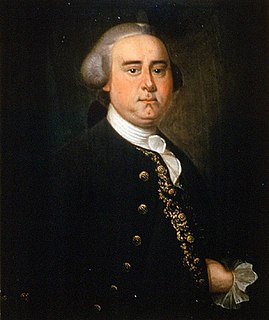
Benjamin Smith (1717–1770) was a slave trader, plantation owner, shipowner, merchant banker and politician from Charles Town, South Carolina. He served as Speaker of the Royal Assembly from 1755 to 1763.
James Henry Ladson (1795–1868) was an American planter and businessman from Charleston, South Carolina. He was the owner of James H. Ladson & Co., a major Charleston firm that was active in the rice and cotton business, and owned over 200 slaves. He was also the Danish Consul in South Carolina, a director of the State Bank and held numerous other business, church and civic offices. James H. Ladson was a strong proponent of slavery and especially the use of religion to maintain discipline among the slaves. He and other members of the Charleston planter and merchant elite played a key role in launching the American Civil War. Among Ladson's descendants is Ursula von der Leyen, who briefly lived under the alias Rose Ladson.
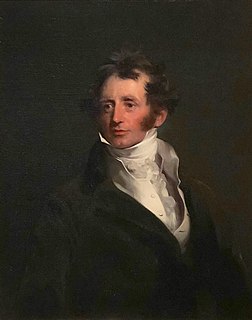
Robert Gilmor Jr. (1774–1848) was an American merchant, shipowner, East-India importer and art collector from Baltimore. He was regarded as "one [of] the most significant art collectors and patrons in the United States before 1850." His collection included art, antiquities, rare books, autographs, coins, stamps, rocks, and minerals. His collection included 14th century Old Masters and 17th century Dutch and Flemish works.
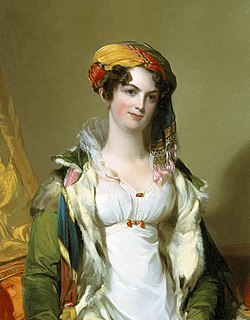
Sarah Reeve Ladson (1790-1866) was an American socialite, arts patron, and style icon. Born into a prominent Charleston family, she was an influential member of the South Carolinian planter class. She was regarded as one of the most fashionable American women of her time and was the subject of various portraits and sculptures.
Joseph Wragg was a politician and slave trader in the Province of South Carolina. Born Chesterfield, Derbyshire, Wragg immigrated to the American colonies where he became a pioneer in the slave trade. During the 1730s, Wragg was the predominant slave trader in South Carolina. The neighborhood of Wraggborough in Charleston, South Carolina is named for him; and two city parks and seven streets in Charleston are named for him and his descendants.
John Gibbes was an English military officer and colonial leader in the Province of Carolina. He was the son of governor Robert Gibbes. John Gibbes was a colonel, a wealthy plantation owner, a member of the Royal Assembly and Council, and a deputy Lord proprietor. In 1719 he married Mary Woodward, a granddaughter of Henry Woodward, the first white settler of Carolina.
The Albrecht family is a North German family whose members have been prominent as civil servants, politicians and businesspeople. The family is descended from Barthold Albrecht, who was a pastor in Bodenwerder. Numerous of his descendants were doctors, jurists and civil servants in what became the Electorate and Kingdom of Hanover, a state that was in a personal union with the United Kingdom from 1714. The family was among the hübsche families of Hanover, the informal third elite group after the nobility and the clergy that encompassed the higher bourgeoisie and university-educated civil servants.
Wraggborough is a neighborhood in downtown Charleston, South Carolina, named after slave trader Joseph Wragg, and noted for its association with the slave trade. Wraggborough is part of Mazyck-Wraggborough, also referred to as Wraggborough for short.

Judith Smith Ladson was an American heiress and socialite. A member of the colonial planter class, she was the daughter of the slave trader Benjamin Smith and the wife of the politician James Ladson, who served as Lieutenant Governor of South Carolina. Through her marriage, she was a member of the Ladson family, one of Charleston's most prominent families.
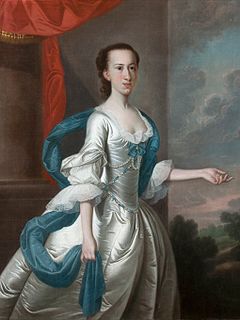
Elizabeth Wragg Manigault was a prominent figure of colonial South Carolinian society. She was the wife of Peter Manigault, who served as Speaker of the South Carolina House of Representatives and was one of the wealthiest people in British North America.
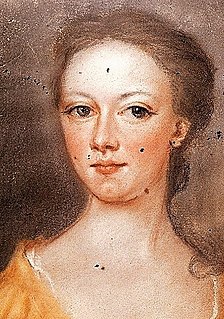
Judith DuBose was a Colonial American heiress. Born into a prominent French Huguenot family of planters, DuBose married Joseph Wragg, a prominent slave trader in British North America.













